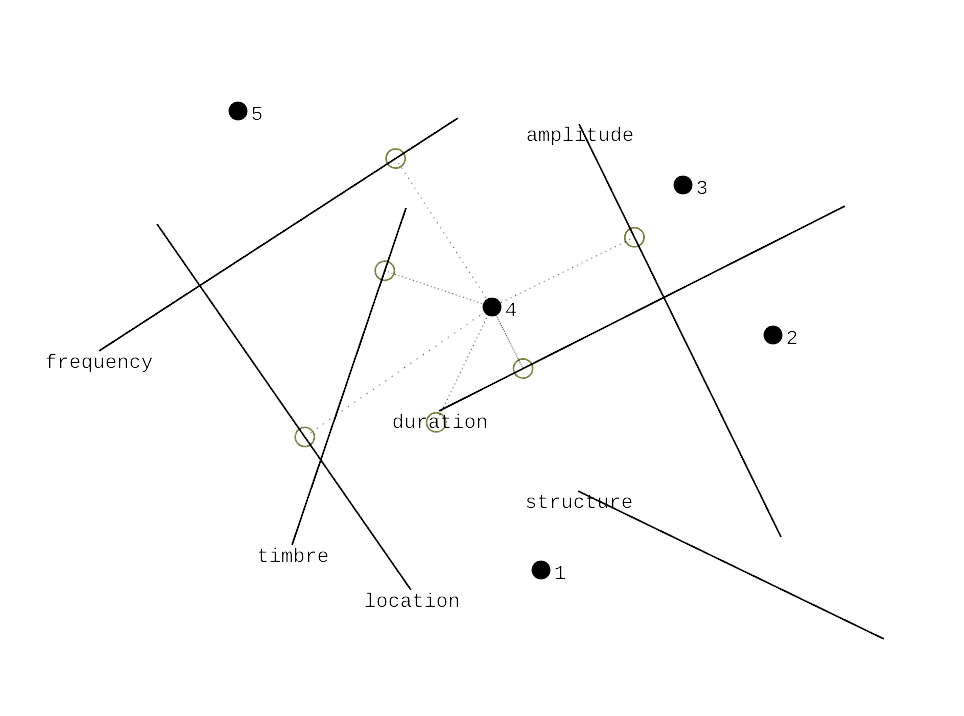
Process-based music lends itself well to interaction because rules can be coded and then realized through software. Consistent systems are also important for creating understandable listener interaction.
Here’s a few techniques drawn from 20th century music which can potentially be applied to Interactive Music.
Aleatoric music (from the Latin word alea, meaning “dice”) is music in which some element of the composition is left to chance, and/or some primary element of a composed work’s realization is left to the determination of its performer(s)
Six transparent sheets having single straight lines. Five having points. The sheets are to be superimposed partially or wholly separated on a suitable surface. Drop perpendiculars by means of any rule obtaining readings thereby for (1) frequency, (2) amplitude, (3) timbre, (4)duration, (5) point of occurrence in an established period of time, (6) structure of event (number of sounds making up an aggregate or constellation). A single use of all sheets yields thirty determinations.

Stochastic music typically models a process (physical or otherwise) and leaves elements of that process up to chance.
Stochastic comes from the Greek word στόχος, which means “aim”. It also denotes a target stick; the pattern of arrows around a target stick stuck in a hillside is representative of what is stochastic.

Process:
Transfer of the phase shifting processes he explored in tape pieces like It’s gonna Rain to live instrumental performance

… the poetics of the “open work” tends to encourage “acts of conscious freedom” on the part of the performer and place [them] at the focal point of a network of limitless interrelations, among which [they] chooses to set up [their] own form without being influenced by an external necessity which definitively prescribes the organization of the work in hand.
Every performance explains the composition but does not exhaust it. Every performance makes the work an actuality, but is itself only complenmentary to all possible other performance of the work.